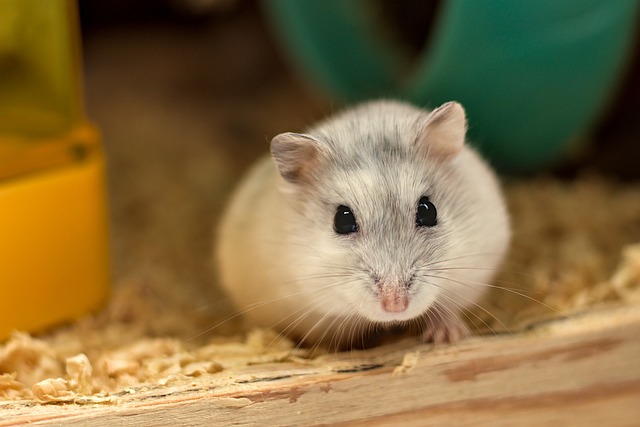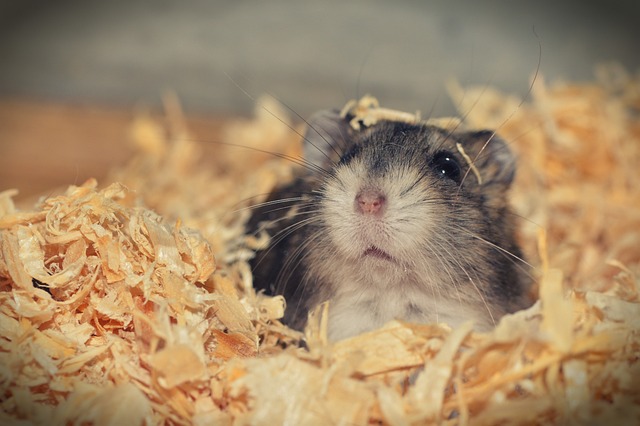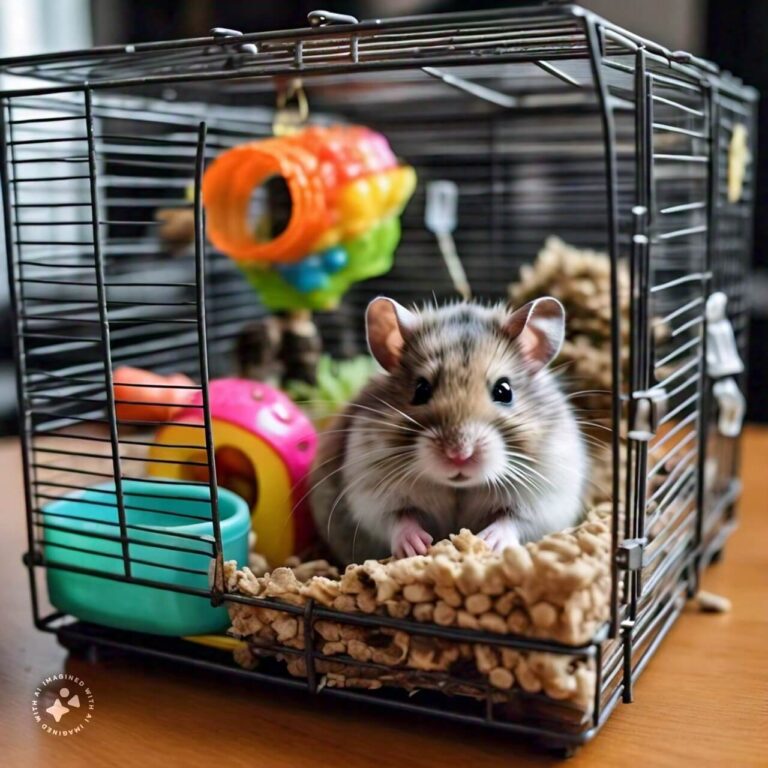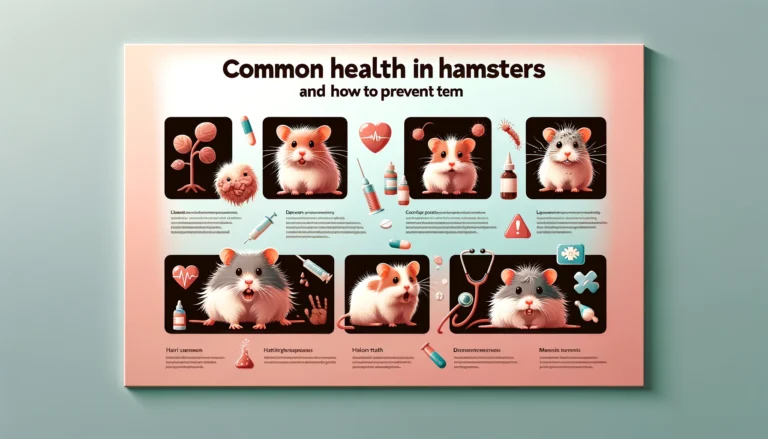Which Hamsters Live The Longest – hamsters.pk
Exploring Longevity: Which Hamster Breeds Have the Longest Lifespan?
Hamsters are popular pets, known for their small size, adorable appearance, and relatively easy care requirements. One of the critical considerations for potential hamster owners is the lifespan of their furry friends. Understanding which hamster breeds tend to live the longest can help in making an informed decision and providing the best possible care.
Introduction to Hamster Lifespan
When it comes to the lifespan of hamsters, various factors come into play, including breed, genetics, diet, environment, and overall care. On average, most hamsters live between 1.5 to 3 years, but some breeds are known for their longevity and can live a bit longer with proper care.
Syrian Hamsters: The Gentle Giants
Lifespan
Syrian hamsters, also known as Golden or Teddy Bear hamsters, are among the most popular pet hamster breeds. These hamsters typically live 2 to 3 years, but with exceptional care, some have been known to live up to 4 years.
Factors Contributing to Longevity
Syrian hamsters benefit from their relatively larger size, which contributes to their robust health and longer lifespan. Ensuring they have a balanced diet, regular exercise, and a stress-free environment can significantly enhance their longevity.
Dwarf Hamsters: Small but Mighty
Types of Dwarf Hamsters
Dwarf hamsters are a category that includes several breeds, such as Campbell’s Dwarf Hamsters, Winter White Dwarf Hamsters, and Roborovski Dwarf Hamsters. Each of these breeds has unique characteristics and lifespan potential.
Roborovski Dwarf Hamsters: The Longevity Champions
Among dwarf hamsters, Roborovski Dwarf Hamsters are notable for their longer lifespans, often living 3 to 3.5 years and sometimes up to 4 years. They are small, agile, and require attentive care to thrive.
Campbell’s and Winter White Dwarf Hamsters
Campbell’s and Winter White Dwarf Hamsters generally have lifespans ranging from 1.5 to 2 years. Although shorter-lived than Roborovskis, they can enjoy a healthy life with proper nutrition and a stimulating environment.
Chinese Hamsters: The Unique Longevity Contenders
Lifespan
Chinese hamsters are less common but are known for their unique appearance and longer lifespan compared to other dwarf breeds. They typically live 2.5 to 3 years, and with excellent care, they can sometimes reach up to 4 years.
Care Considerations
Chinese hamsters require a spacious cage, a varied diet, and regular handling to maintain their health and well-being. Their longer tails and slender bodies make them distinctive and a delightful pet choice for those interested in a hamster with a longer lifespan.
Factors Influencing Hamster Longevity
Diet and Nutrition
A balanced diet is crucial for a hamster’s health. High-quality commercial hamster food, supplemented with fresh vegetables, fruits, and occasional protein sources, can help ensure they receive all necessary nutrients.
Habitat and Environment
Providing a safe, clean, and spacious habitat is essential. Regular cage cleaning, appropriate bedding, and safe toys for enrichment contribute to a hamster’s overall well-being and longevity.
Health Care and Veterinary Visits
Regular health check-ups with an exotic pet veterinarian can help catch any potential health issues early. Keeping an eye on their behavior and physical condition allows for timely intervention if any problems arise.
Social Interaction and Mental Stimulation
Hamsters benefit from mental stimulation and social interaction. While Syrian hamsters are solitary and prefer to live alone, dwarf and Chinese hamsters may enjoy companionship if introduced carefully. Providing toys, tunnels, and opportunities for exploration can keep them mentally and physically active.
Conclusion: Choosing the Right Long-Lived Hamster Breed
When considering a hamster as a pet, understanding the lifespan of different breeds can guide you in making the best choice. Syrian hamsters, with their gentle nature and relatively longer lifespan, are a great option for many. However, if you’re interested in a more active and longer-lived dwarf hamster, Roborovski Dwarf Hamsters are an excellent choice. Chinese hamsters also offer a unique option for those seeking a pet with a bit more longevity.
By providing proper care, nutrition, and a stimulating environment, you can ensure your hamster lives a long, healthy, and happy life.
Hamster Lifespan 101: Understanding the Factors Behind a Long Life

Hamsters are adorable and popular pets known for their small size and charming personalities. But have you ever wondered about the factors that contribute to their longevity? In this comprehensive guide, we delve into the various elements that influence a hamster’s lifespan, helping you understand how to ensure your furry friend lives a long and healthy life.
The Basics of Hamster Lifespan
Hamsters, like all living creatures, have a finite lifespan. On average, these tiny rodents live between two to three years in captivity. However, several factors can influence this lifespan, leading to variations among individual hamsters.
Genetics: The Foundation of Longevity
Genetics play a crucial role in determining a hamster’s lifespan. Just as in humans, some hamster breeds are predisposed to living longer than others. For example, Roborovski hamsters are renowned for their extended lifespans, often living up to four years or more with proper care.
Diet and Nutrition: Fueling Longevity
A nutritious diet is paramount to a hamster’s overall health and longevity. Providing a balanced diet rich in fresh fruits, vegetables, seeds, and pellets can help ensure your hamster receives the essential nutrients it needs to thrive. Avoid feeding excessive treats or foods high in sugar, as these can lead to obesity and other health issues, potentially shortening your hamster’s lifespan.
Environmental Factors: Creating the Ideal Habitat
The environment in which a hamster lives significantly impacts its lifespan. A clean, spacious, and well-ventilated cage with appropriate bedding and enrichment activities promotes physical and mental well-being, contributing to a longer life expectancy. Additionally, maintaining a consistent temperature range of 65-75°F (18-24°C) and keeping the habitat away from drafts or direct sunlight can help prevent stress-related health problems.
Exercise and Mental Stimulation: Keys to Vitality
Regular exercise and mental stimulation are essential for a hamster’s longevity. Providing opportunities for physical activity through the use of exercise wheels, tunnels, and toys not only helps keep your hamster fit but also prevents boredom and behavioral issues. Rotating toys and introducing new challenges stimulate the hamster’s mind, promoting mental enrichment and overall well-being.
Healthcare and Veterinary Care: Monitoring Wellness
Regular veterinary check-ups are crucial for monitoring your hamster’s health and addressing any potential issues early on. Routine examinations, vaccinations (where applicable), and dental care help ensure your hamster remains in optimal health throughout its life. Additionally, promptly addressing any signs of illness or injury can significantly impact your hamster’s longevity and quality of life.
Conclusion
While the average lifespan of a hamster may be relatively short, understanding the factors that contribute to longevity can help you provide the best possible care for your furry companion. By focusing on genetics, diet and nutrition, environmental factors, exercise and mental stimulation, as well as healthcare and veterinary care, you can maximize your hamster’s lifespan and enjoy many happy years together. Remember, every hamster is unique, so tailor your care approach to suit your pet’s individual needs, ensuring a long, healthy, and fulfilling life.
Top Hamster Breeds for Longevity: Choosing a Long-Lived Furry Friend
Introduction
Hamsters make delightful pets, bringing joy and companionship to countless homes around the world. When considering a pet hamster, longevity is a crucial factor to consider. After all, you want your furry friend to be a part of your life for as long as possible. In this article, we’ll explore the top hamster breeds known for their longevity and provide insights into choosing the ideal long-lived companion for your family.
Understanding Hamster Lifespan
Before delving into specific breeds, it’s essential to understand the average lifespan of a hamster. Hamsters typically live between two to three years in captivity, although some individuals may surpass this range with proper care and genetics. Factors such as diet, environment, genetics, and healthcare play significant roles in determining a hamster’s lifespan.
1. Syrian Hamster (Mesocricetus auratus)
The Syrian hamster, also known as the Golden hamster, is one of the most popular pet hamster breeds worldwide. Renowned for its longevity, Syrian hamsters can live between two to three years with proper care. These solitary creatures thrive in spacious enclosures with plenty of enrichment activities. Syrian hamsters come in various colors and coat patterns, making them visually appealing pets.
2. Chinese Hamster (Cricetulus griseus)
Chinese hamsters are another long-lived hamster breed, with an average lifespan of two to three years. Unlike Syrian hamsters, Chinese hamsters can be kept in same-sex pairs or small groups, making them suitable for owners looking to keep multiple hamsters. They have distinctive coloring, with a dark stripe running down their back, and are known for their active and inquisitive nature.
3. Roborovski Hamster (Phodopus roborovskii)
The Roborovski hamster, often referred to as the Robo hamster, is the smallest and one of the longest-lived hamster breeds. With a lifespan of three to four years, these tiny creatures bring joy to many households. Roborovski hamsters are incredibly active and enjoy exploring their surroundings. Due to their small size, they require specialized care to ensure their well-being.
4. Winter White Dwarf Hamster (Phodopus sungorus)
Winter White Dwarf hamsters, also known as Siberian hamsters, are prized for their longevity and adorable appearance. These hamsters typically live between two to three years when provided with proper care. They have a distinctive ability to change their coat color from brown to white during the winter months, camouflaging themselves in their natural habitat.
Choosing Your Long-Lived Furry Friend
When selecting a hamster breed for longevity, it’s essential to consider various factors such as lifespan, temperament, and care requirements. Additionally, proper nutrition, regular veterinary check-ups, and enriching their environment can contribute to extending your hamster’s lifespan. Regardless of the breed, providing love, attention, and a safe environment is key to ensuring a long and fulfilling life for your furry friend.
Conclusion
Choosing a hamster breed with a long lifespan is a significant decision for any prospective pet owner. By selecting from the top hamster breeds known for their longevity, such as the Syrian, Chinese, Roborovski, or Winter White Dwarf hamster, you can enjoy many years of companionship and joy with your furry friend. Remember to prioritize proper care, nutrition, and enrichment to ensure a happy and healthy life for your beloved hamster.
Caring for Long-Lived Hamsters: Tips to Extend Your Pet’s Life
Hamsters are beloved pets known for their adorable appearance and playful personalities. While these tiny creatures bring joy to many households, it’s essential to understand that they require proper care to live long and healthy lives. With the right approach to their care, you can significantly extend your hamster’s lifespan and ensure they thrive in their environment.
Understanding Hamster Lifespan
Before delving into care tips, it’s crucial to grasp the typical lifespan of hamsters. On average, hamsters live between two to three years, but with excellent care and attention to their needs, they can sometimes exceed this timeframe. Various factors influence their longevity, including genetics, diet, habitat conditions, and overall health.
Creating a Comfortable Habitat
The foundation of hamster care lies in providing a comfortable and stimulating habitat. Start with a spacious cage that allows for ample movement and exploration. Ensure the cage has proper ventilation and is made of materials that are safe for your hamster.
Key Elements of a Hamster Habitat:
- Bedding: Opt for safe, dust-free bedding such as aspen shavings or paper-based bedding. Avoid cedar and pine shavings as they can be harmful to hamsters.
- Hideouts and Toys: Incorporate hideouts and chew toys to encourage natural behaviors and provide mental stimulation.
- Wheel: A solid-surfaced exercise wheel is essential for hamsters to stay active and maintain their physical health. Ensure the wheel is appropriately sized to prevent back injuries.
Providing a Nutritious Diet
A well-balanced diet is vital for promoting longevity in hamsters. Fresh water should be available at all times, provided in a sipper bottle to prevent spills and contamination. When it comes to food, a mix of commercial hamster pellets and fresh vegetables is ideal.
Key Dietary Considerations:
- Commercial Pellets: Choose high-quality hamster pellets that contain essential nutrients and vitamins. Avoid mixes with large quantities of seeds, as these can lead to selective feeding and nutritional imbalances.
- Fresh Vegetables: Offer a variety of fresh vegetables such as carrots, broccoli, and leafy greens. These provide additional vitamins and fiber to support digestive health.
- Occasional Treats: While treats can be given sparingly, ensure they are hamster-safe options such as small pieces of fruits or plain, unsalted nuts.
Maintaining Cleanliness and Hygiene
A clean environment is essential for preventing illness and promoting overall well-being in hamsters. Regular cage cleaning and proper hygiene practices are critical aspects of care.
Hygiene Tips:
- Spot Cleaning: Remove any soiled bedding and uneaten food daily to maintain cleanliness.
- Regular Cage Cleaning: Perform a thorough cage cleaning at least once a week, replacing all bedding and sanitizing the cage and accessories with a mild, hamster-safe cleaner.
- Grooming: While hamsters are generally clean animals, gentle grooming with a soft brush can help remove loose fur and prevent matting.
Regular Veterinary Check-ups
Routine veterinary care is essential for monitoring your hamster’s health and addressing any potential issues promptly. Schedule regular check-ups with a veterinarian experienced in exotic pet care.
Veterinary Care Tips:
- Annual Exams: Schedule annual wellness exams to assess your hamster’s overall health and discuss any concerns with your vet.
- Prompt Attention to Symptoms: Monitor your hamster closely for any signs of illness, such as changes in appetite, activity level, or unusual behaviors. Seek veterinary care promptly if you notice any abnormalities.
Conclusion
Caring for a long-lived hamster requires dedication, attention to detail, and a genuine love for these delightful pets. By providing a comfortable habitat, nutritious diet, proper hygiene, and regular veterinary care, you can significantly enhance your hamster’s quality of life and enjoy many happy years together.
Remember, each hamster is unique, so observe your pet’s preferences and behaviors closely to tailor their care accordingly. With the right approach, you can foster a strong bond with your hamster while ensuring they live a long, happy, and healthy life.












